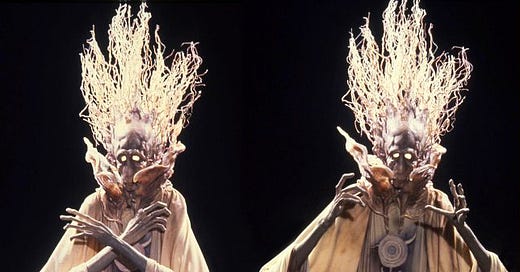David,
I am kicking myself that, in our recent conversation on gnosticism, I did not mention that, in my humble opinion, The Dark Crystal is probably the senior gnostic fantasy of quality to be produced in our age, cinematically speaking. Several factors coalesced to secure this outcome, but most of them are simply different auspices under which to speak…
Keep reading with a 7-day free trial
Subscribe to A Perennial Digression to keep reading this post and get 7 days of free access to the full post archives.



